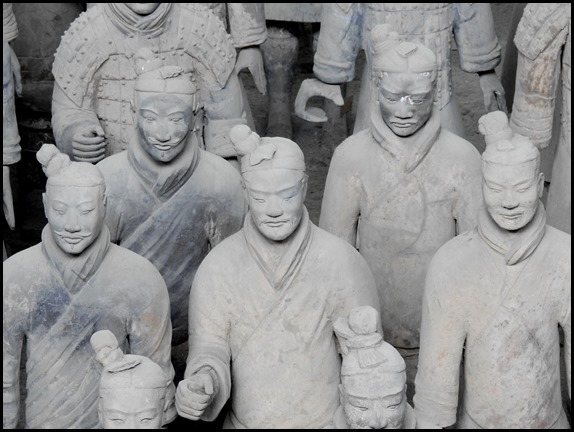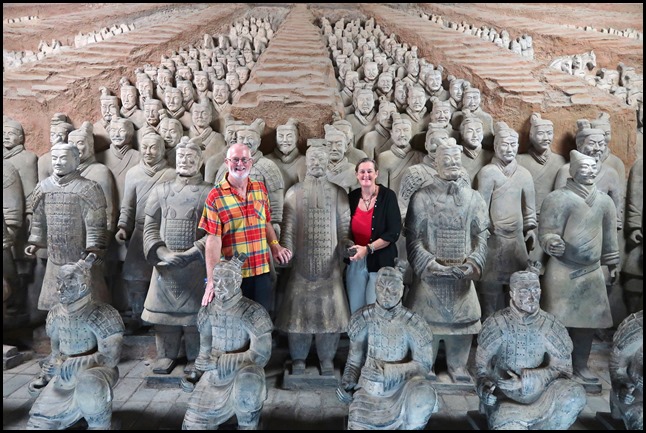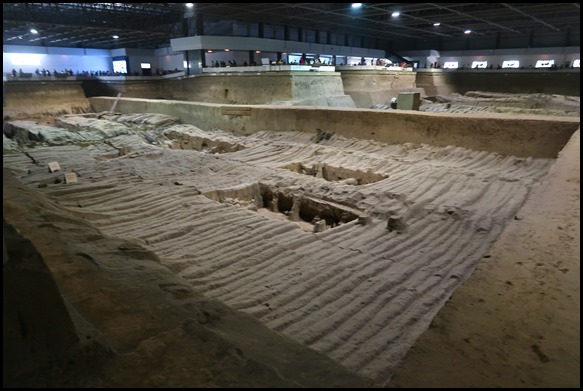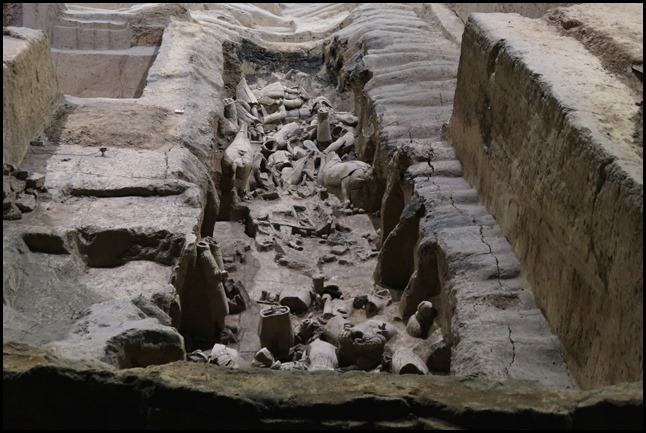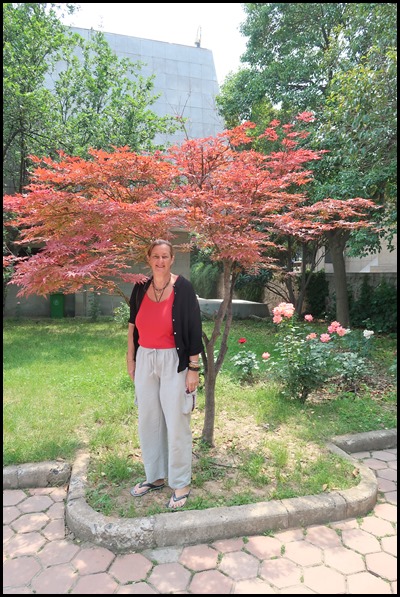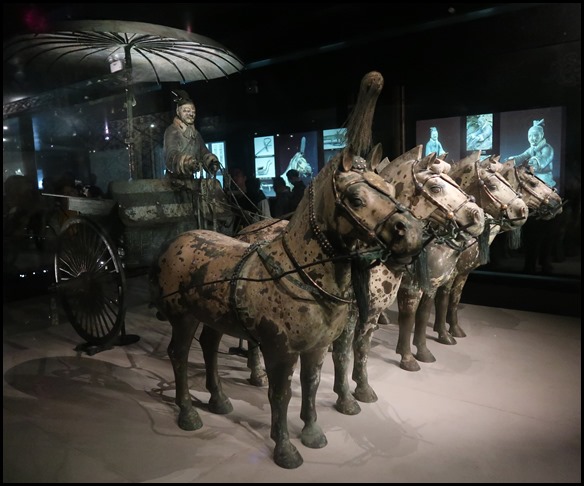The Terracotta Army

|
The Terracotta Army Museum
 There was a
legend in the Chinese ancient capital of Xi’an that has lasted for thousands of
years. That there was buried a Terracotta Army, named Terracotta Warriors, Terracotta Soldiers or The
Underworld Army.....
As we drove along the main road from our digs in Xi’an we saw,
to our left, an insignificant ‘hump’ in the distance. This
hump holds the tomb of Emperor Qui Shi Huang
(18th of February 259 BC to 10th of September 210 BC), he was the son of King
Zhuang Xing of Qin and his Empress mother. Emperor Qui unified China and was the
founder of the Qin Dynasty. He survived many battles but his bravery did not
stop him dying of mercury poisoning, the very medication put together by his
alchemists and prescribed by his court physicians to make him immortal. He died
a two month overland journey from here but his people managed to suppress the
news until they arrived for his burial - they were fearful of uprisings and
there was skulduggery afoot as who would succeed him.
Evidence tells us that his tomb is
intact but is rigged with crossbows should it be disturbed. Archaeologists also
know that the immediate area and leading up to the tomb are a hundred rivers of
mercury, said to represent the “Heavenly Beliefs”. Modern techniques have proven
– from deep samples taken - that mercury levels are indeed a hundred times above
any safe levels, so at present, best to leave well alone.
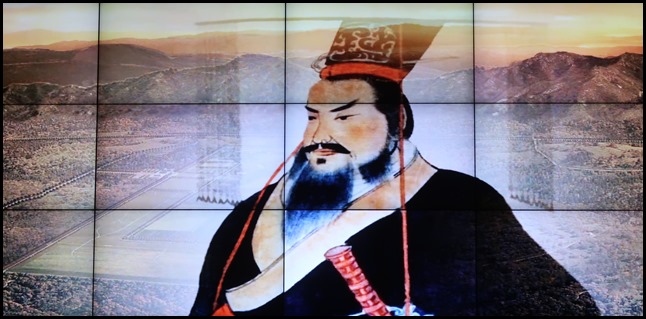 Emperor
Qin (image seen in Pit 2) is the man responsible for the Terracotta Army
and our reason to have come to Xi’an. In 215 BC the Emperor ordered his General,
Meng Tian to set in motion his grand plan. He undertook gigantic projects in order to consolidate his
power and country, like the building of the first version of the Great Wall.
 The Terracotta Army was built at the centre of a complex
designed to mirror the urban plan of Xianyang, the capital of the Qin Dynasty,
he would lead this army to conquer the afterlife. We saw this artists impression of the whole area in Pit 2, the
Emperor’s burial mound (the Terracotta Army is way off the image to the
left).
The foundations took two years to
complete, speculation says that 700,000 men worked on the project but as that
number is bigger than any known city in the world at that time, very unlikely.
Experts cannot agree but a believable number is around 20,000. Although there is
written documentation at that time, anyone who worked on the project suffered
death to preserve the secrets.
The Terracotta Army was found on the
29th of March 1974 when a team of locals began to dig a well. They found heads
and bits and were frightened, but news quickly spread and the rest is history.
The terracotta warriors were unearthed five metres
beneath the surface and about one and a half kilometres east of his mausoleum.
The whole necropolis measures some ninety-eight square kilometres.
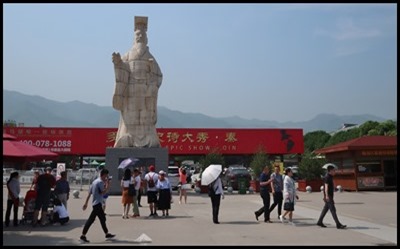 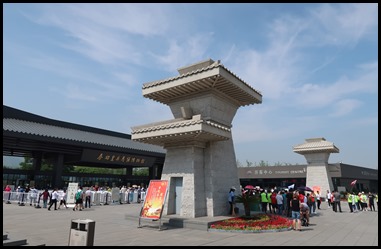 Arriving at the Terracotta Army Museum was thrilling.
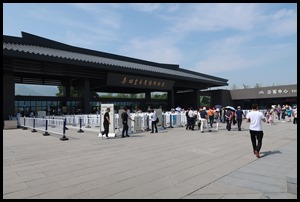 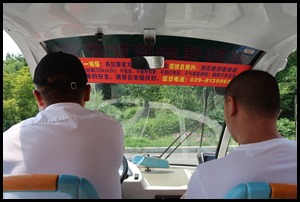 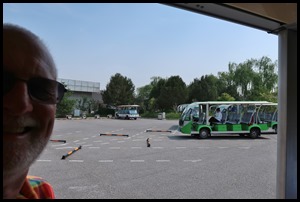 We got tickets, the group leader in
front of us was buying five hundred tickets.........clearly the wrong queue, but
in no way a bother to our growing excitement. We went through security, found a buggy and
nothing could wipe the smile off the birthday
boy.
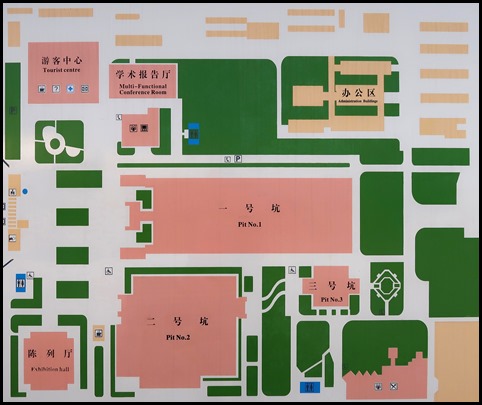 Map of the
site.
The information board
reads: The Museum of the
Terracotta Army was opened to the public in 1979. It is the world-famous museum
that is constructed on the site of its findings. The main exhibits of the Museum
of the Terracotta Army are three exposed pits with clay warriors and horses, as
well as the hall of the two bronze chariots and horses. Approximately 8,000 clay
warriors and horses, more than 10,000 bronze weapons have been found in the
pits. The museum is like a treasure house of Qin Dynasty’s military affairs,
science and technology, art and culture. It has been listed as an UNESCO “World
Heritage Site” (in 1987). Today the “Eighth Wonder of the World” has
become a synonym for the well-known terracotta army.
 Ready for Pit
1, we stood for a moment. I remember with great excitement when they were first discovered,
I never thought for one minute that one day I would be standing here, on my
birthday, all these years later (forty four to be
exact). At that time what were the top three
on your Bucket List. Oo, that’s a tough
question. Come back to me on it. Some time later (which also gave me
time to think about my own) Bear said Machu Picchu, The
Great Wall of China and an island in the South Pacific. Did you ever
think to tick off all three. No, not for a
minute. So what were my top three as a youngster, probably driven,
like so many others by Sir David Attenborough who took us all over the world in
the BBC wildlife programs – The Galapagos, Africa (specifically to see meerkats
and lions) and the condor of Peru. Did I ever think to tick them off, not when
my childhood travel saw me go no further than Weston-Super-Mare...... to travel
anywhere outside Europe was a dream.
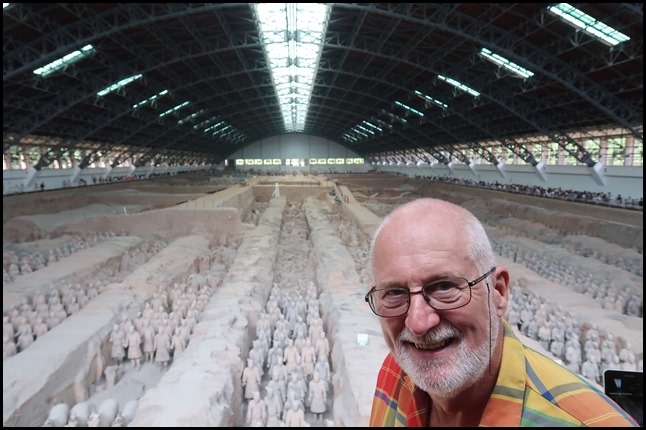
The army is the masterpieces of realism and comprises different branches of the armed force, chariots, horses as well as their weapons but most surprising is each of their faces. Every one is different, facial shape, _expression_, nose, cheeks, some have beards or moustaches, some look stern and others look as if they are smiling.
Pit 2 (we looked around third)..........
Outside Pit 2 Bear took rather a nice picture of me under my favourite tree, an acer.
and lastly the Hall of the Two Bronze Chariots and Horses. Unbelievable.
"Some people hear their own inner voices with great clearness and they live by what they hear. Such people become crazy, or they become legends." Tristan Ludlow (Brad Pitt’s character) in the film Legends of the Fall so thrilled Emperor Qin had such a magnificent plan.
ALL IN ALL COMPLETELY SPELLBINDING UTTERLY AWESOME, NEAR THE TOP OF MY BUCKET LIST |
